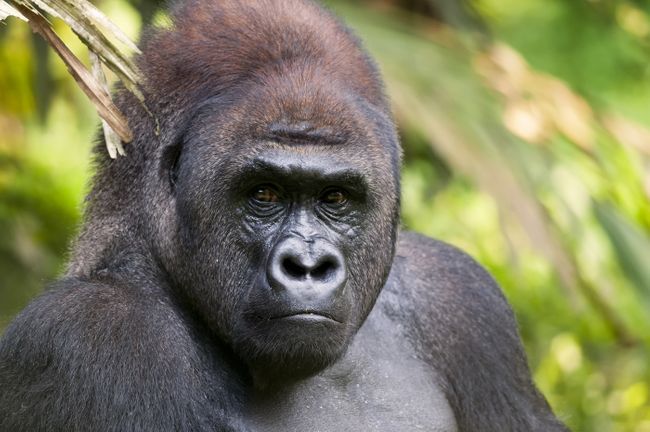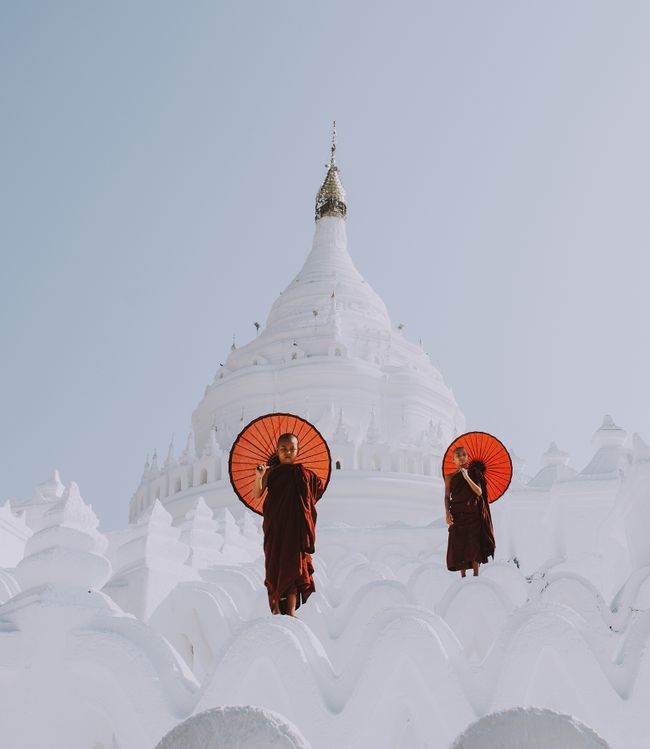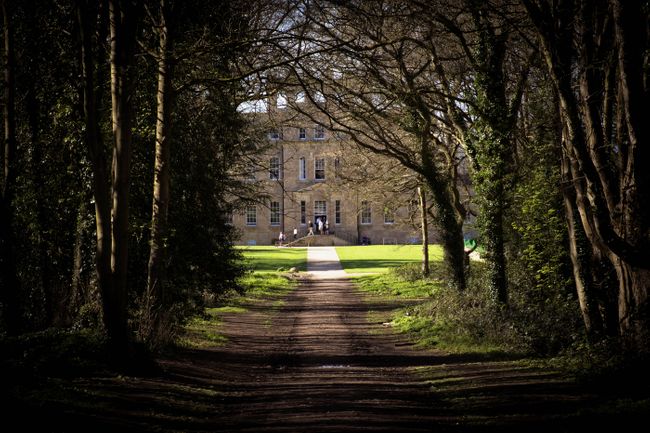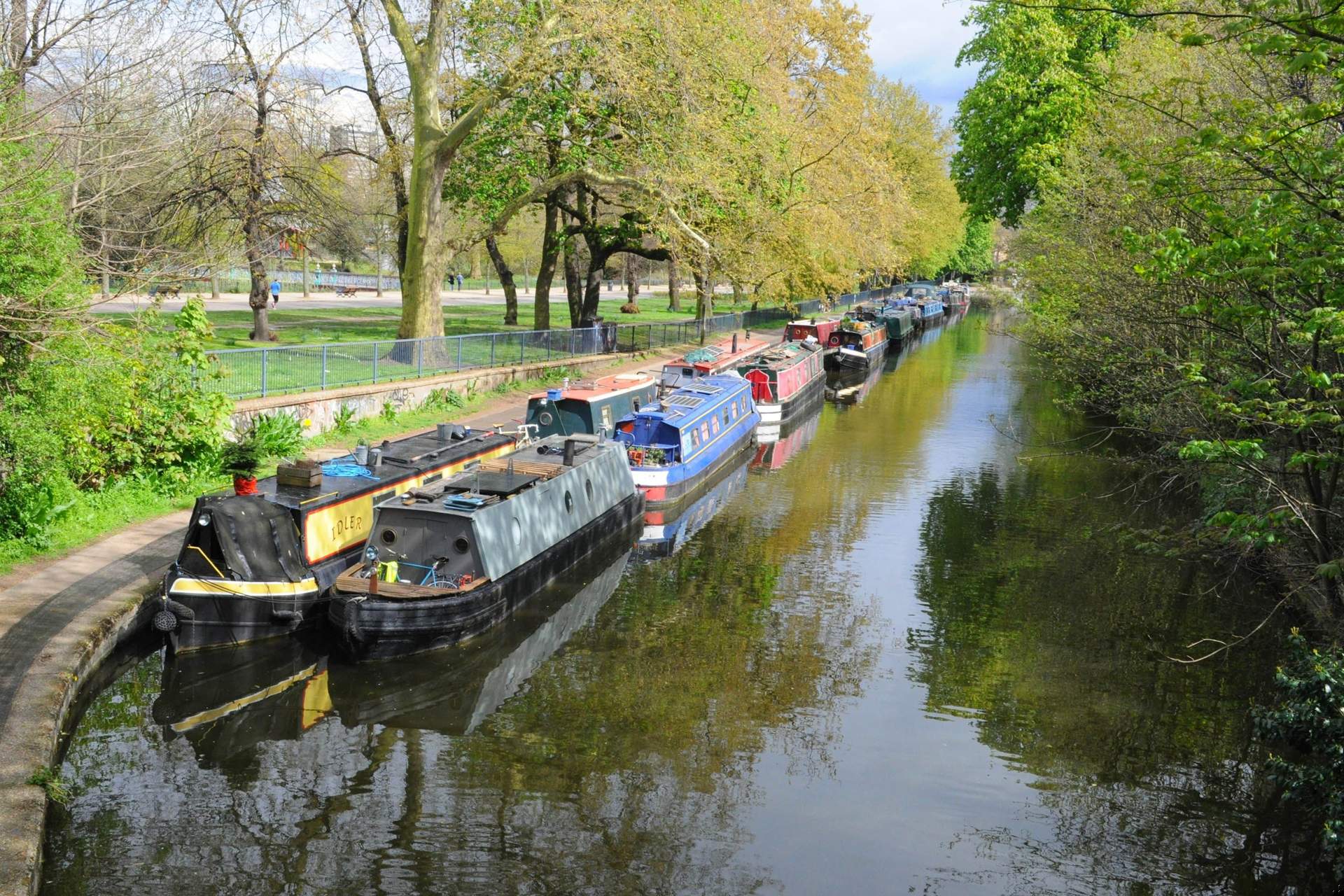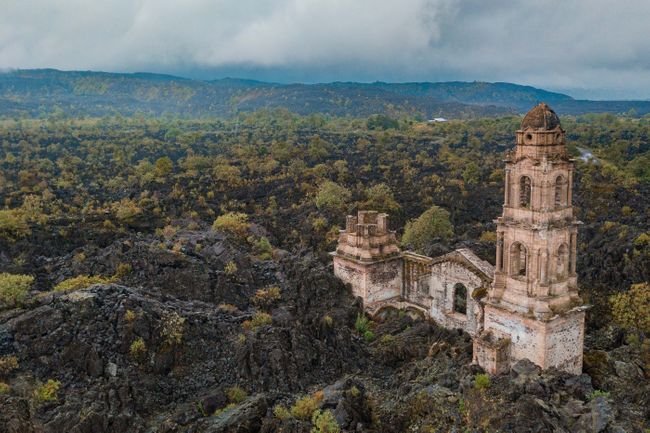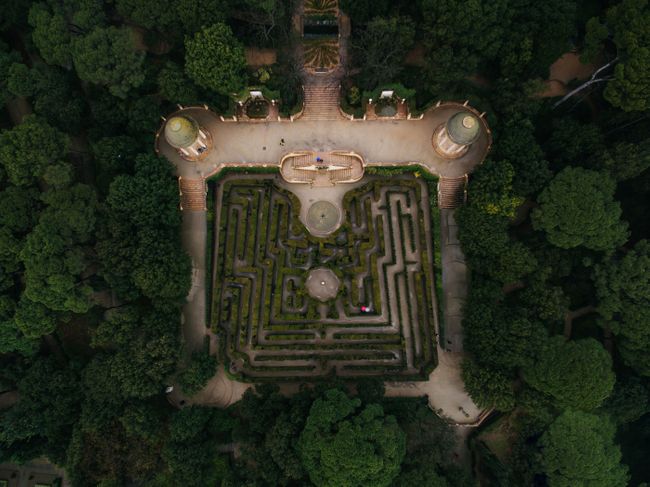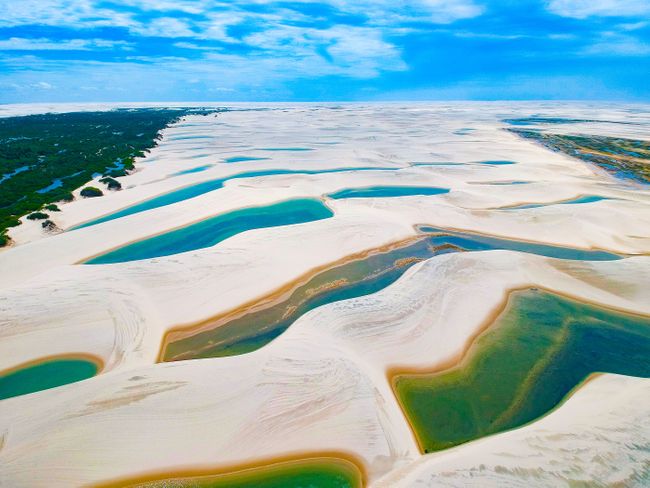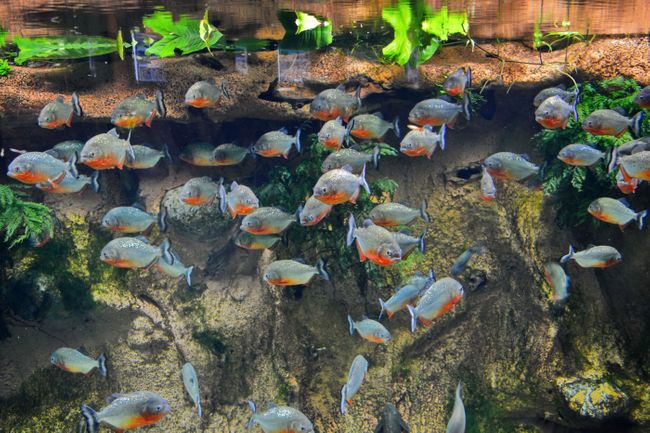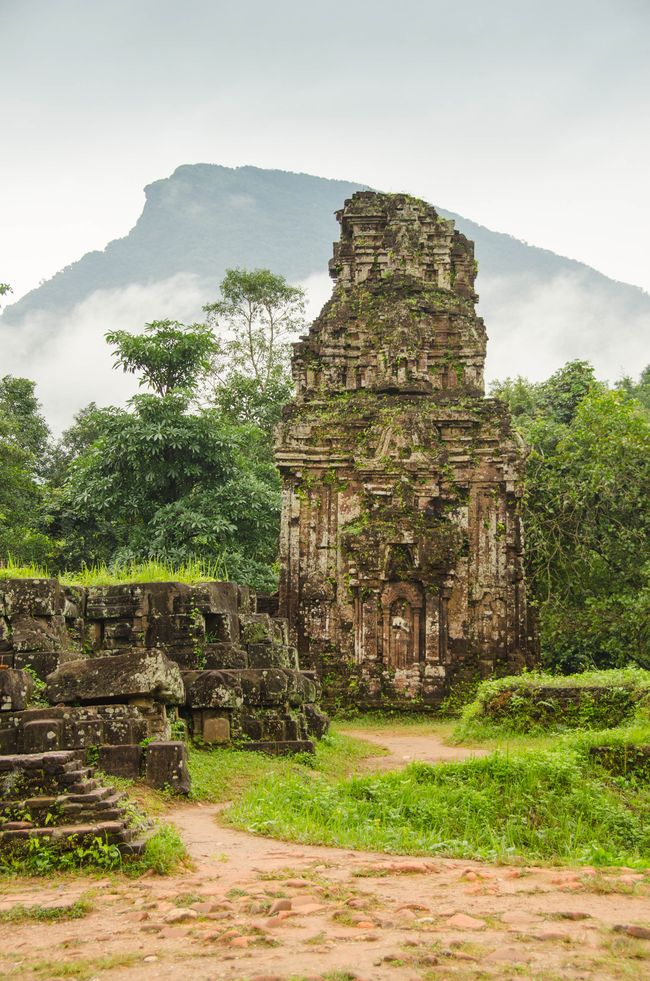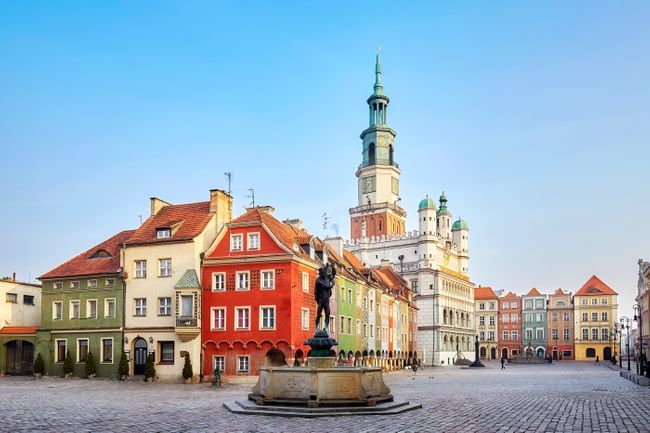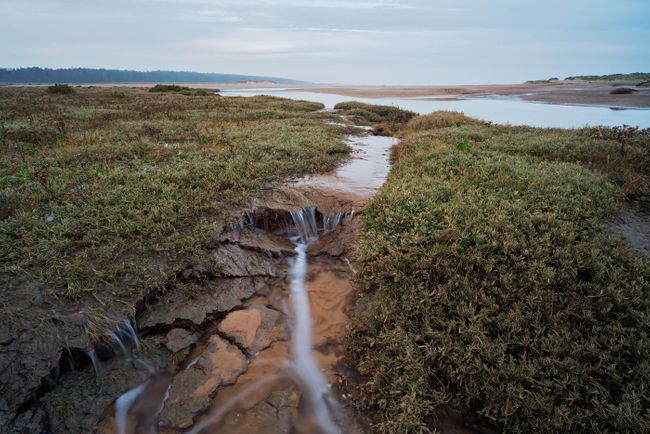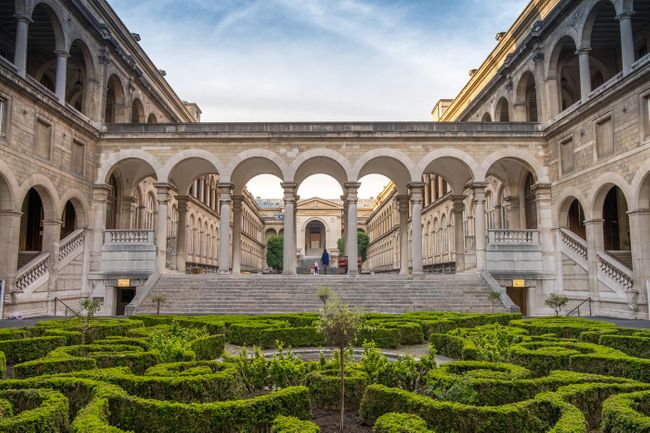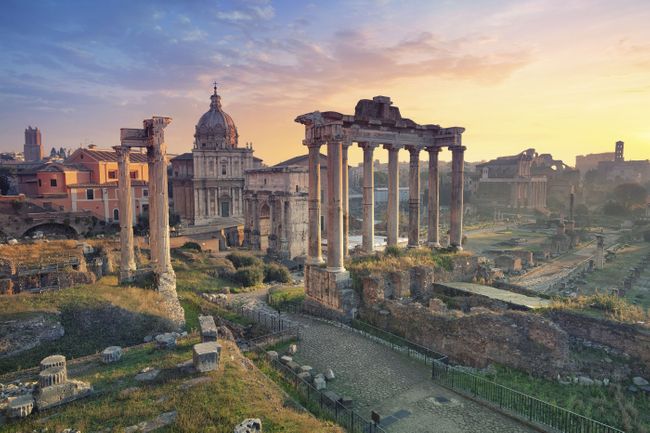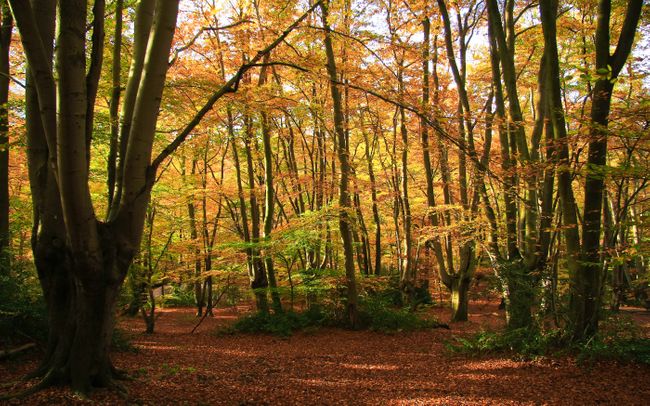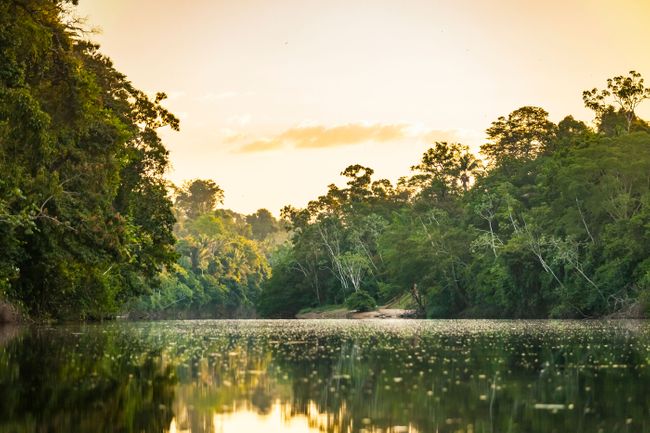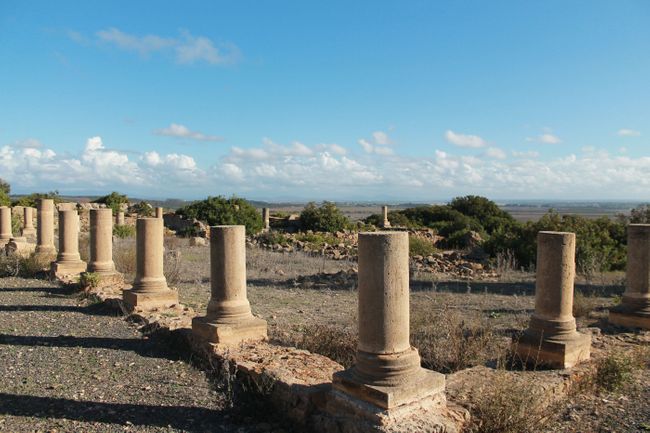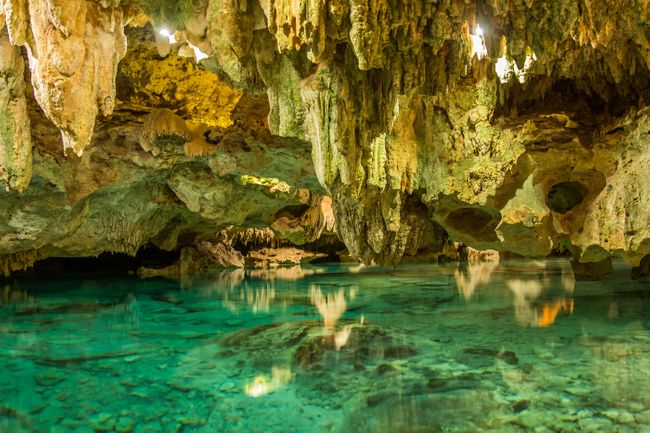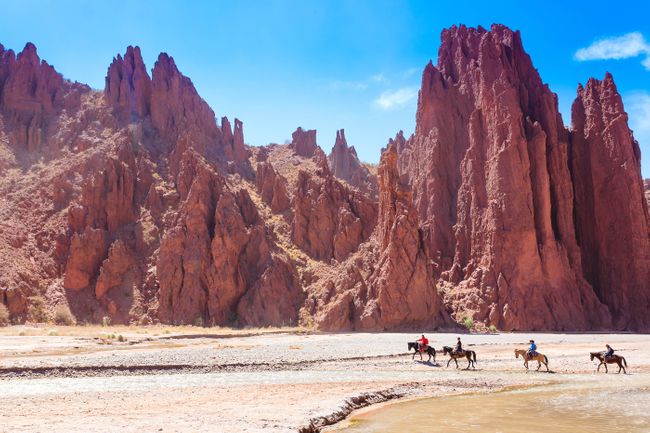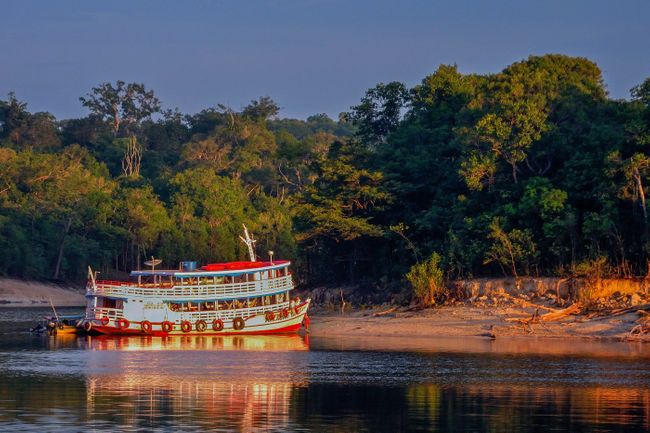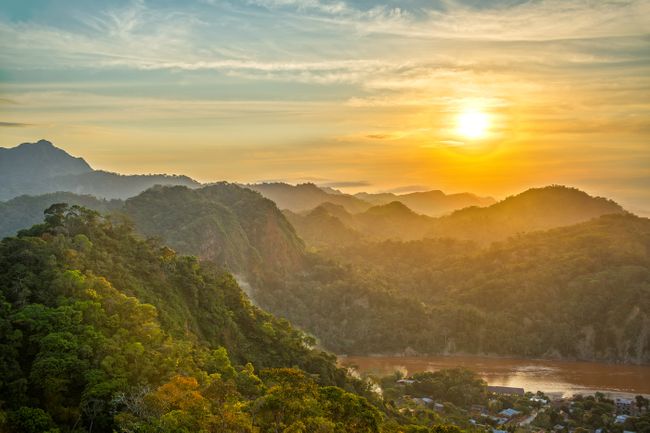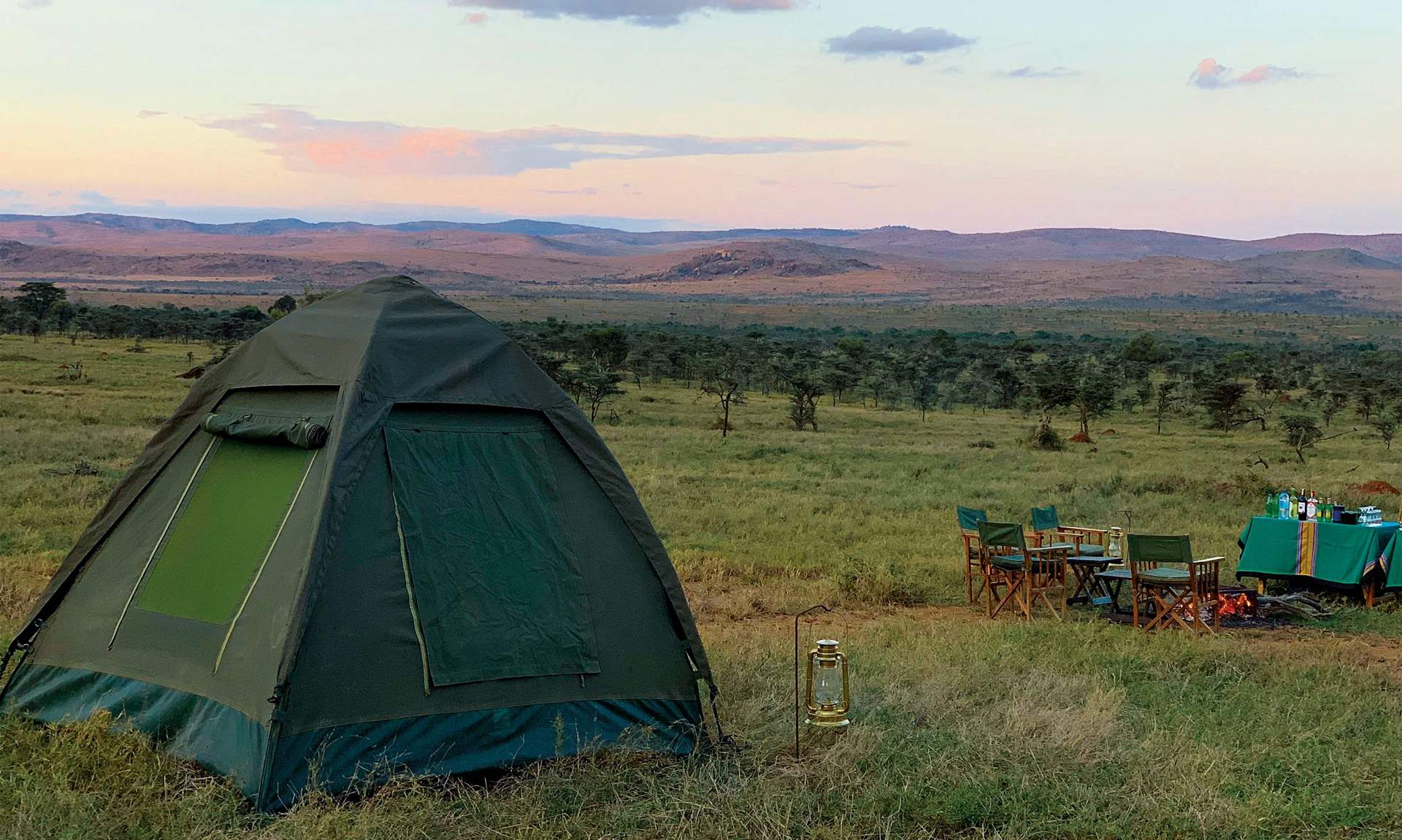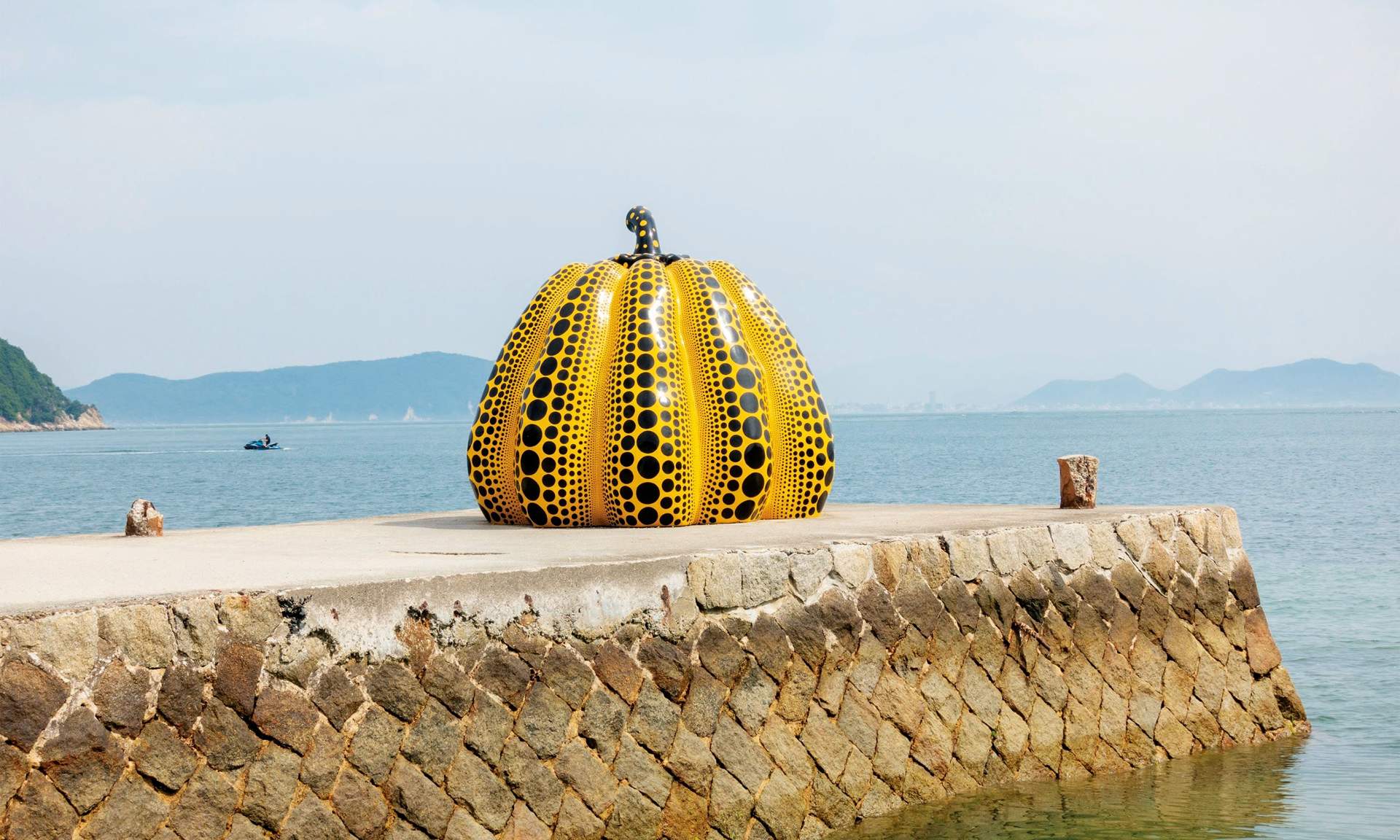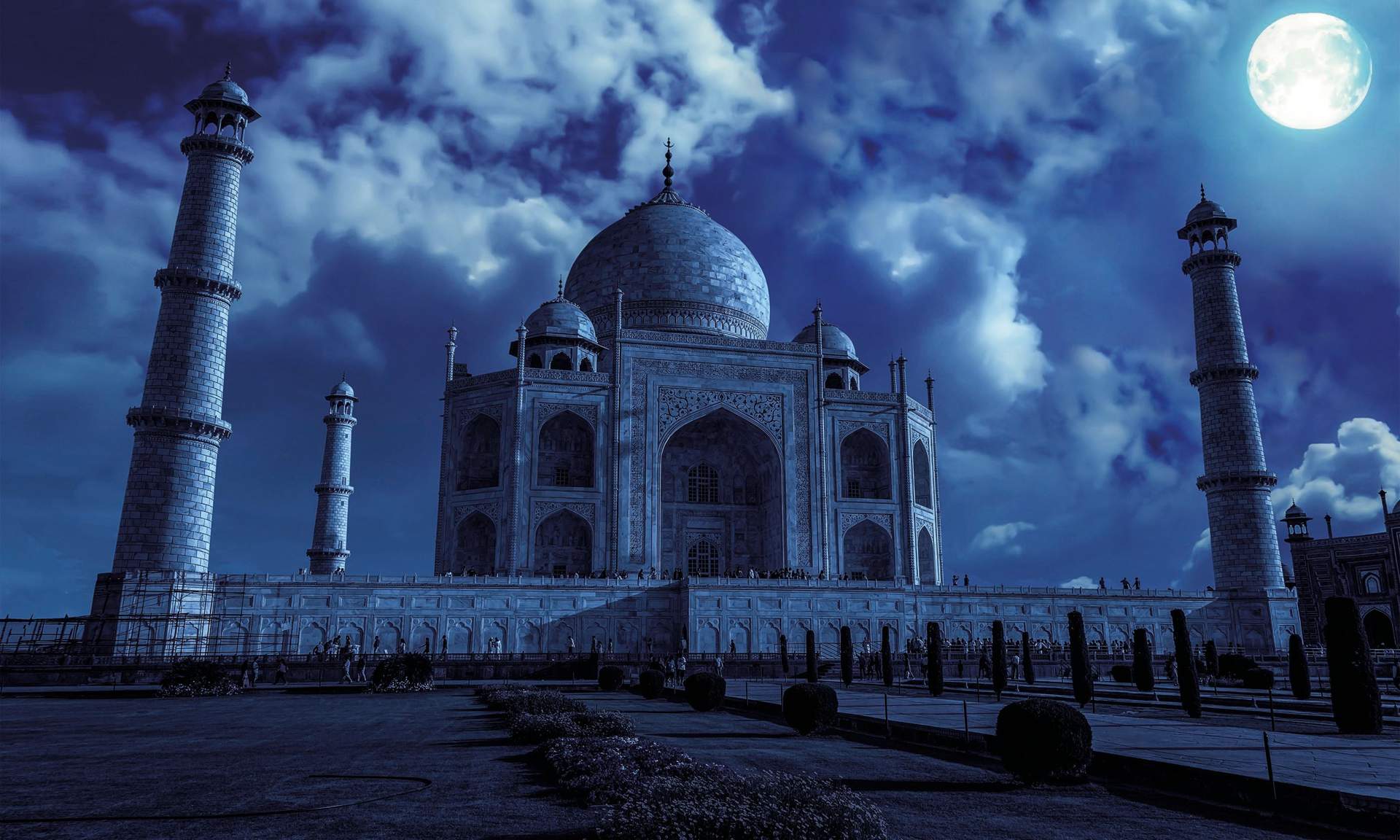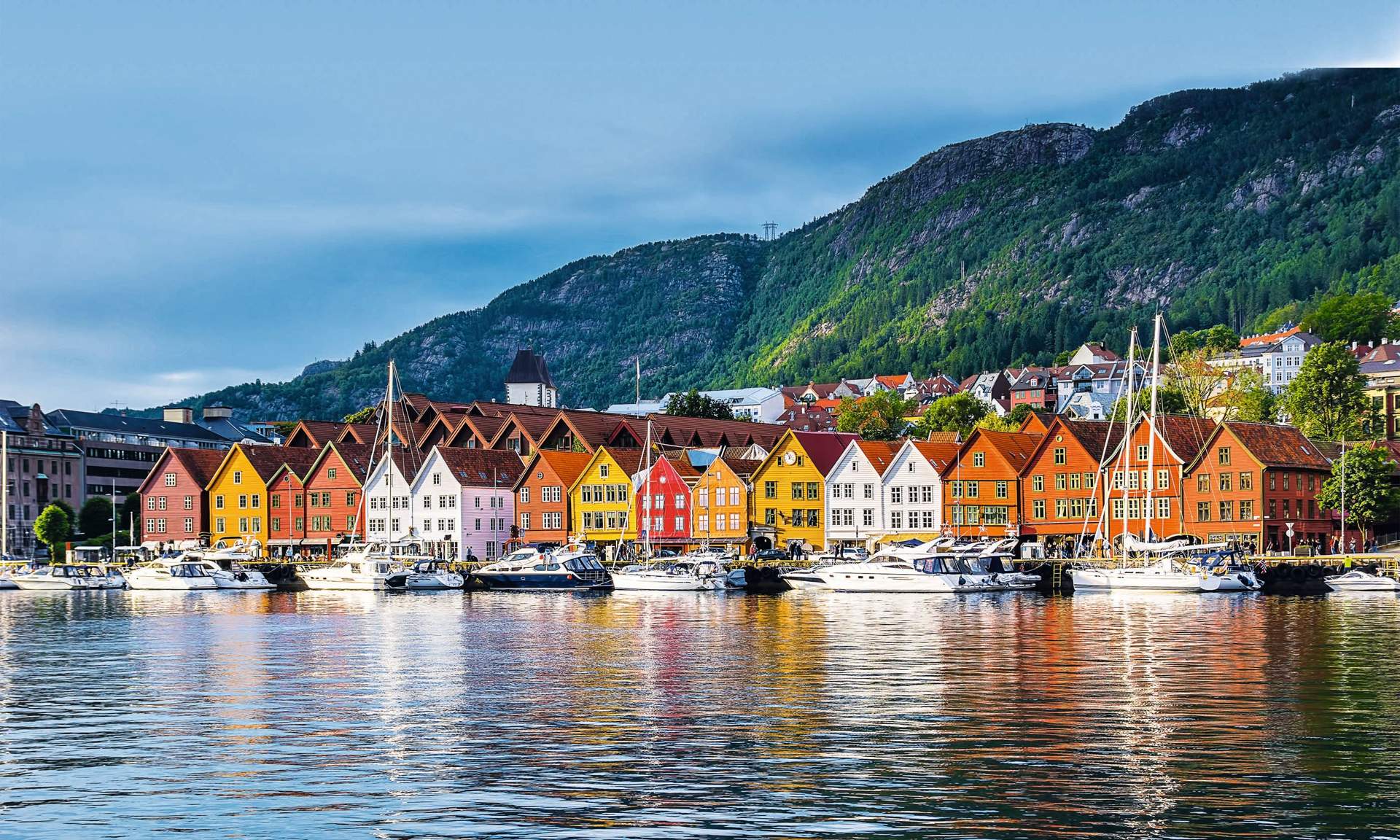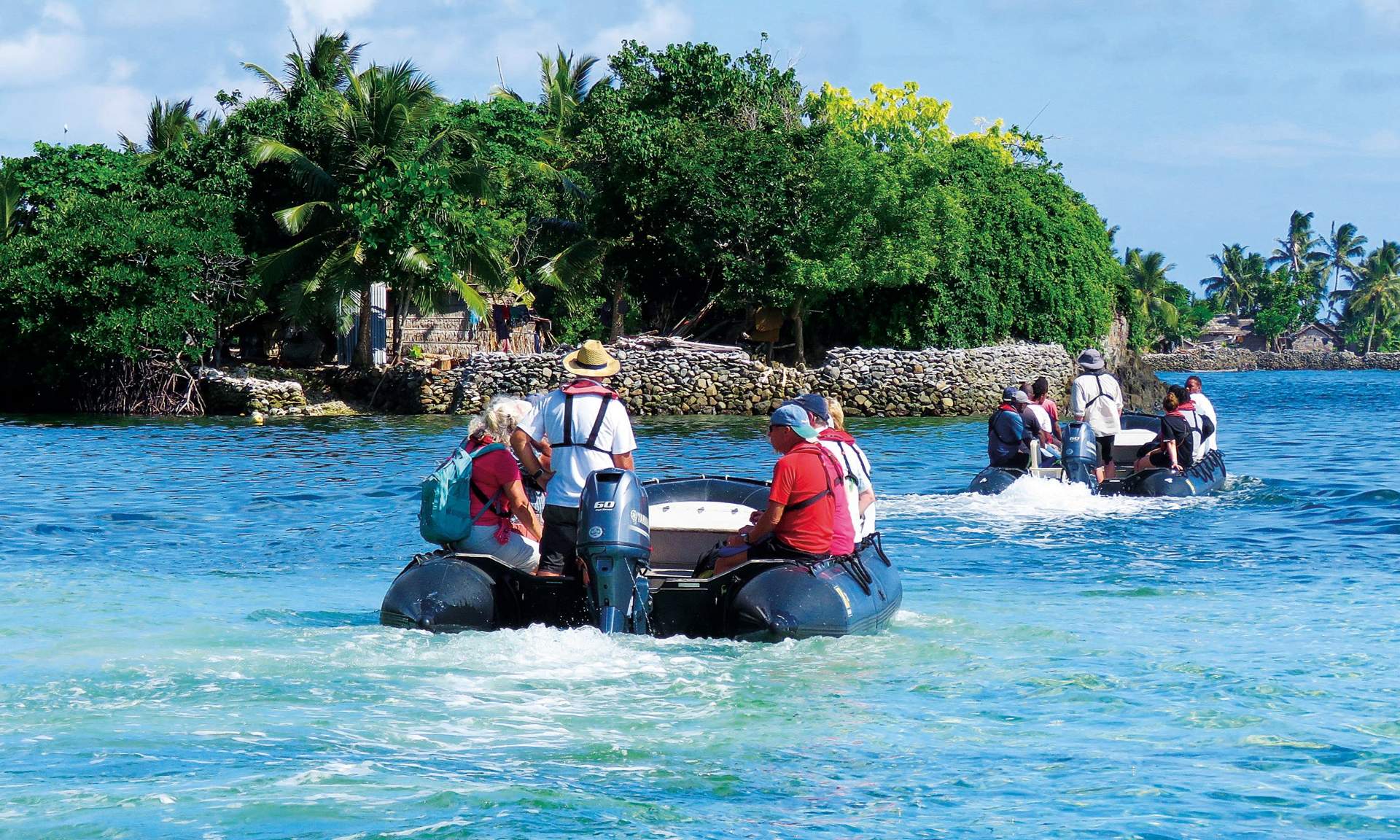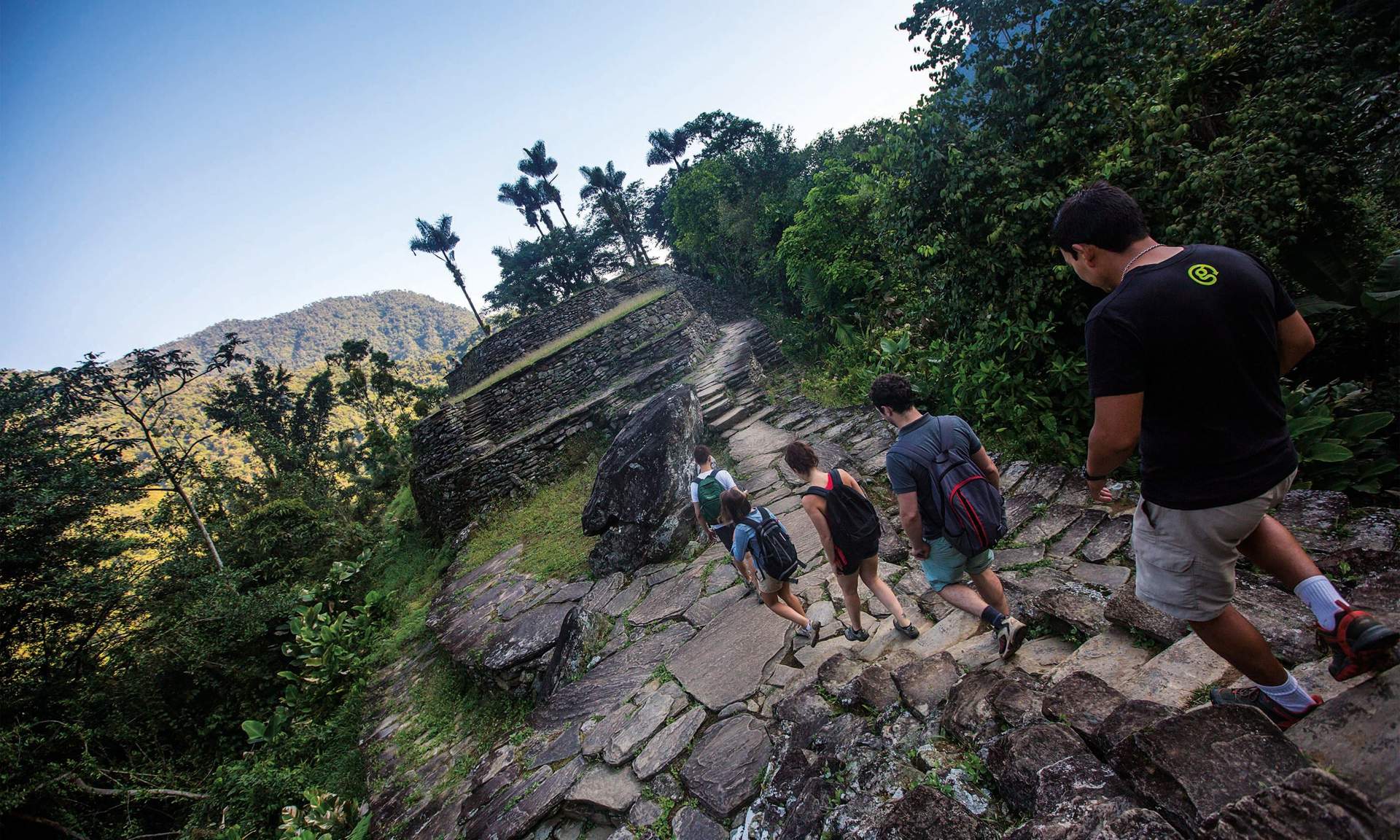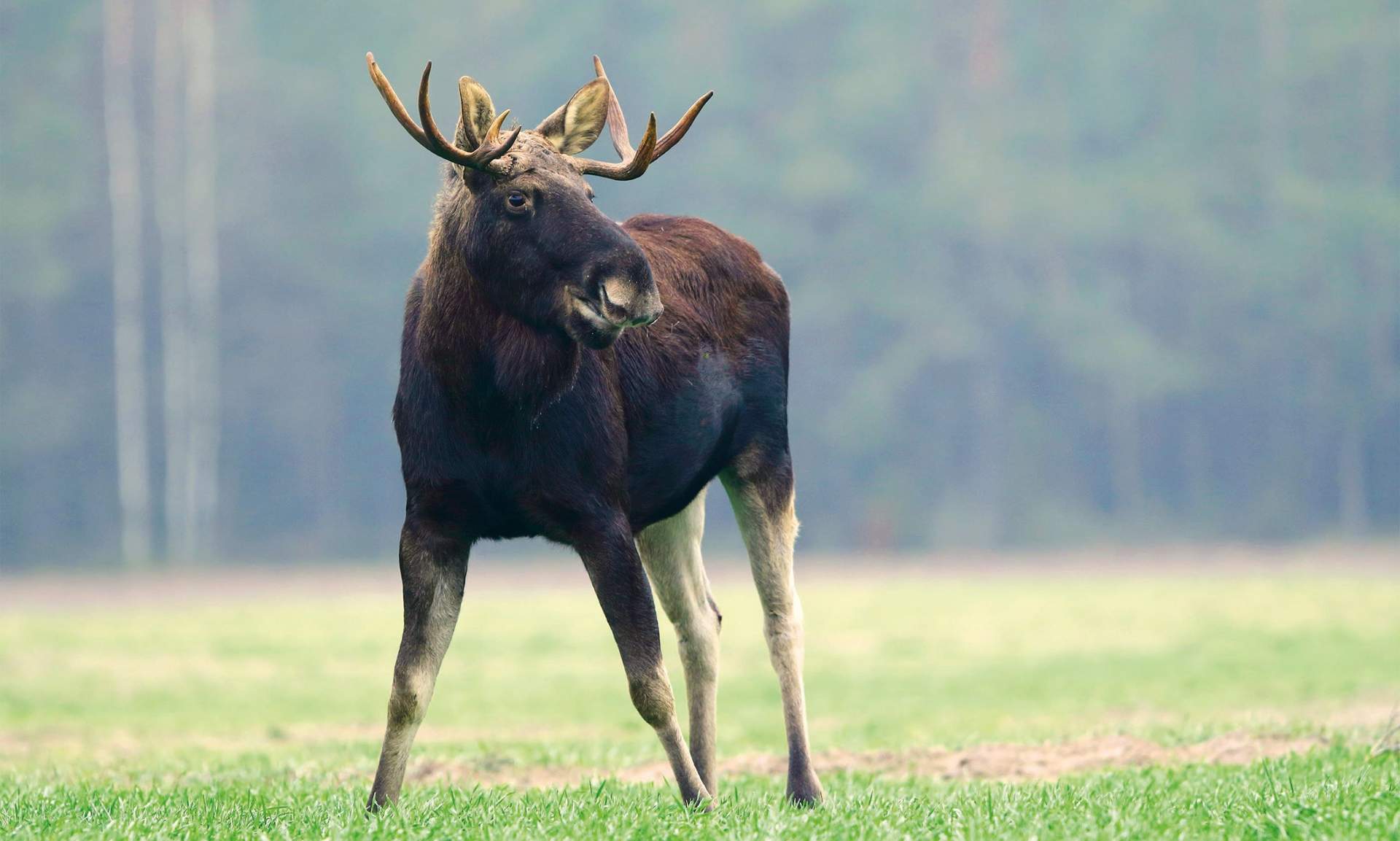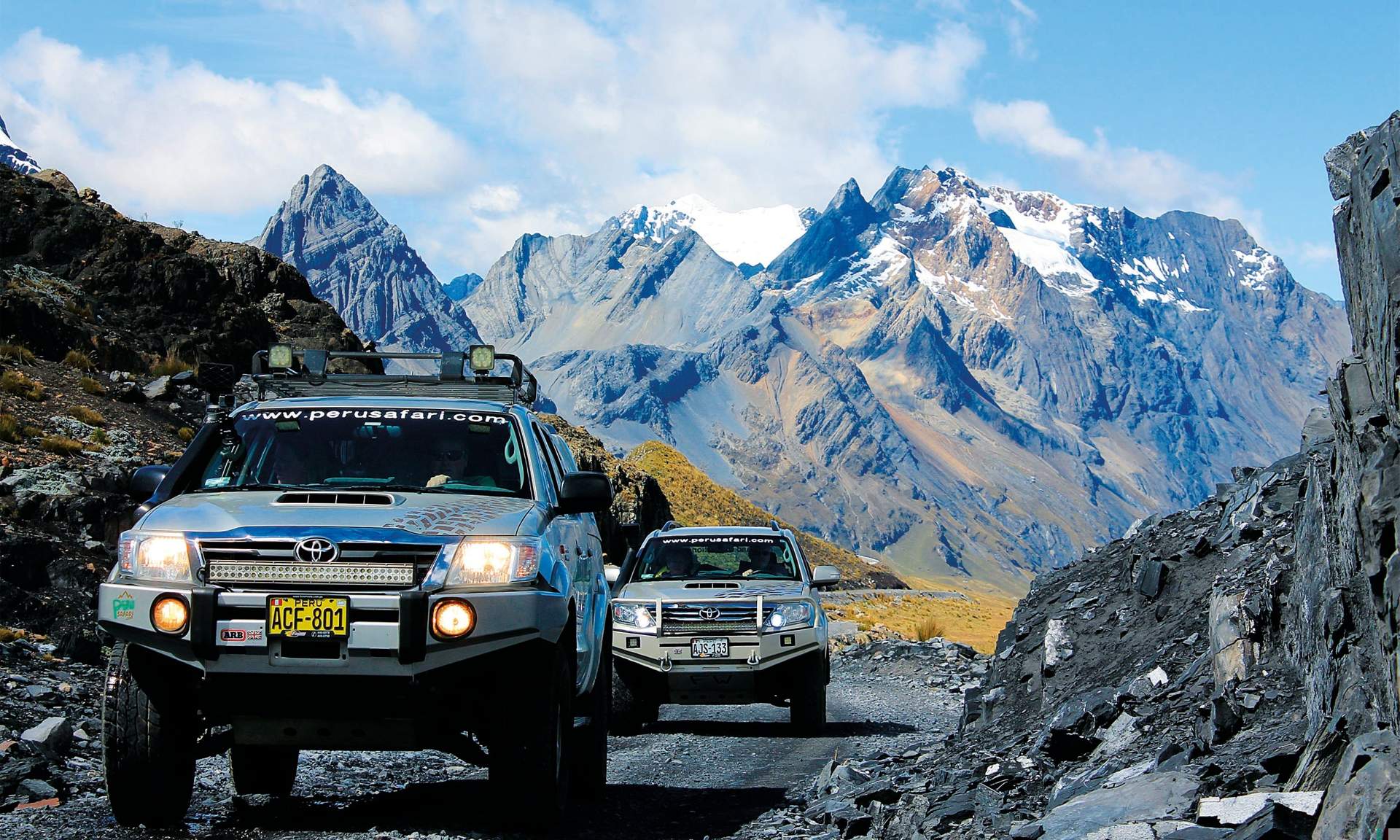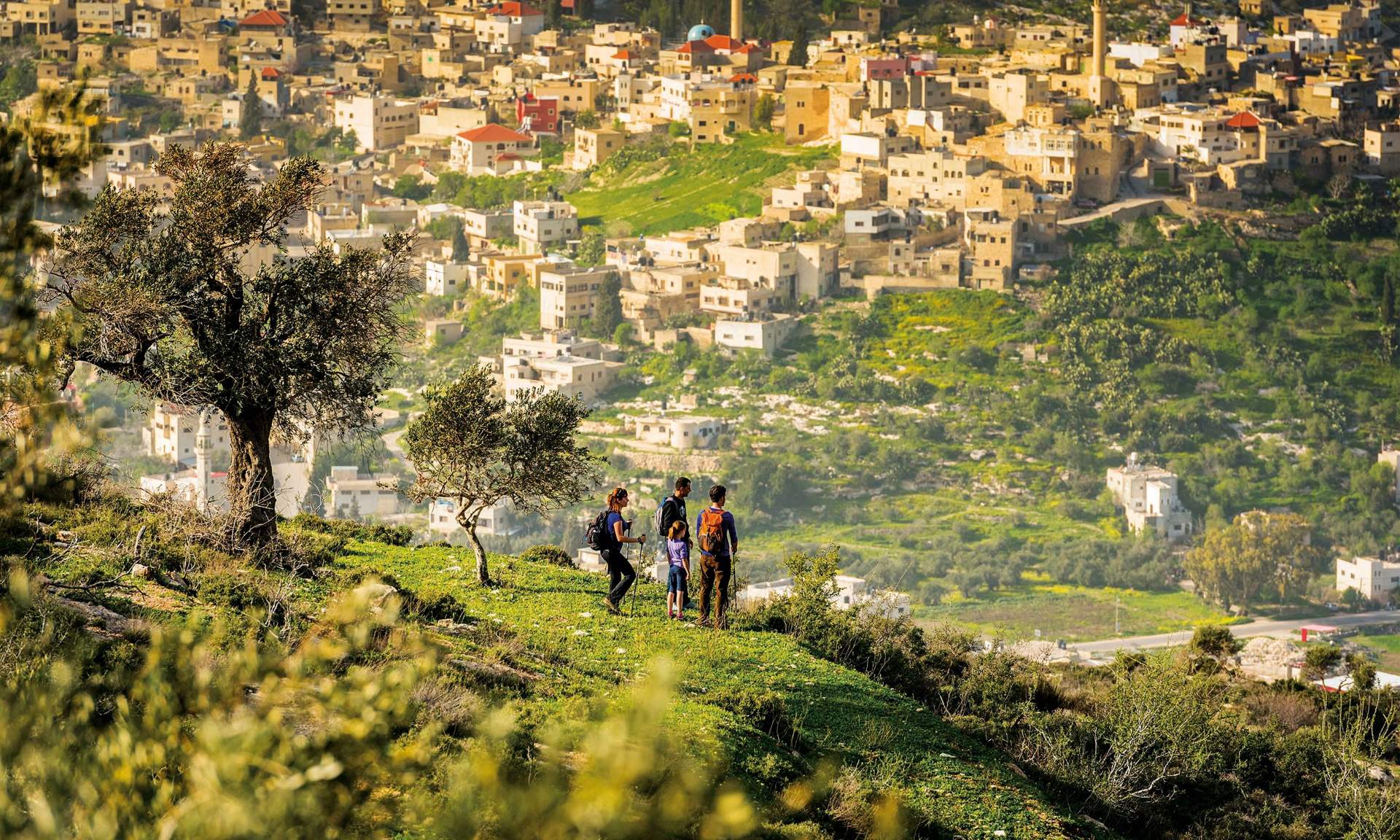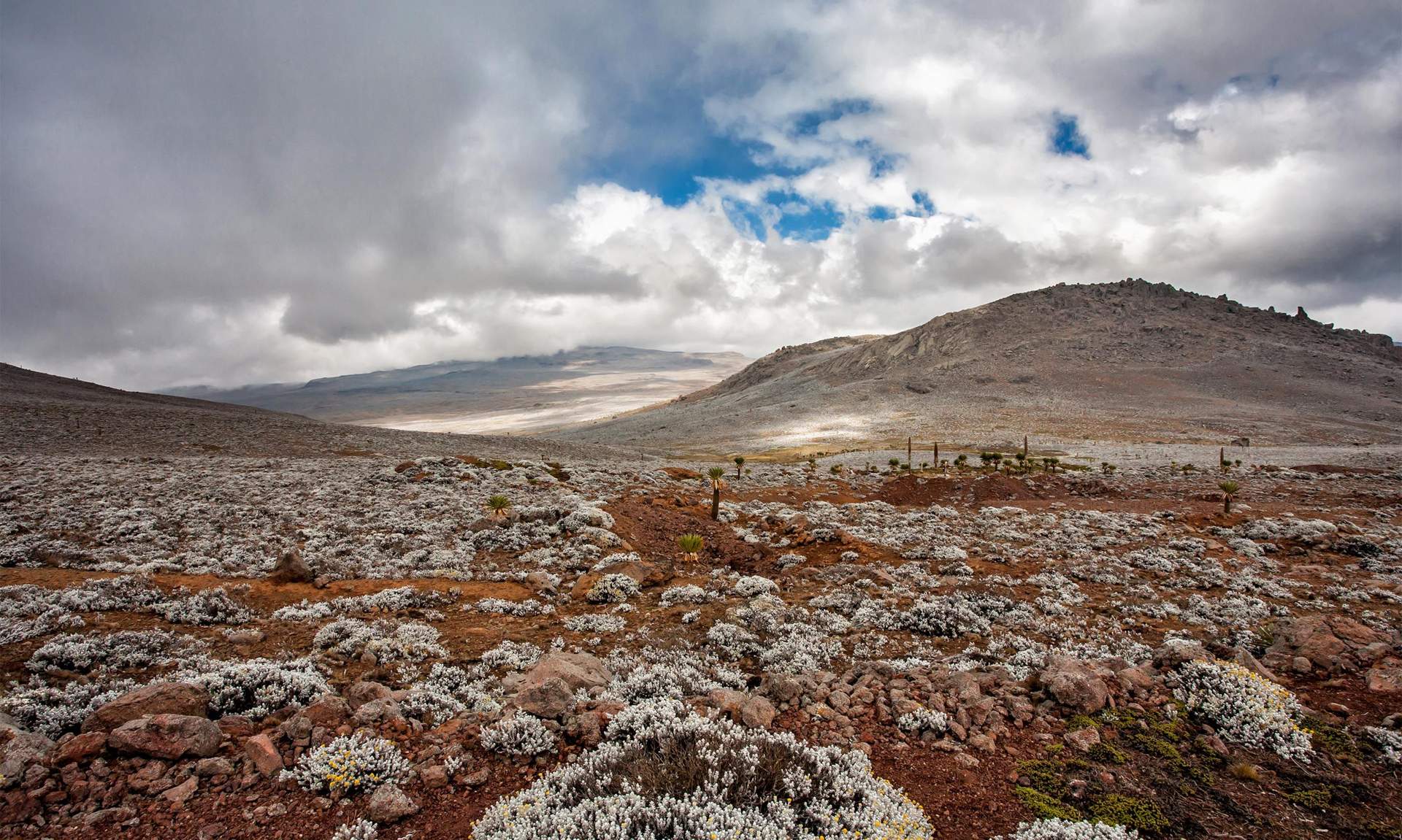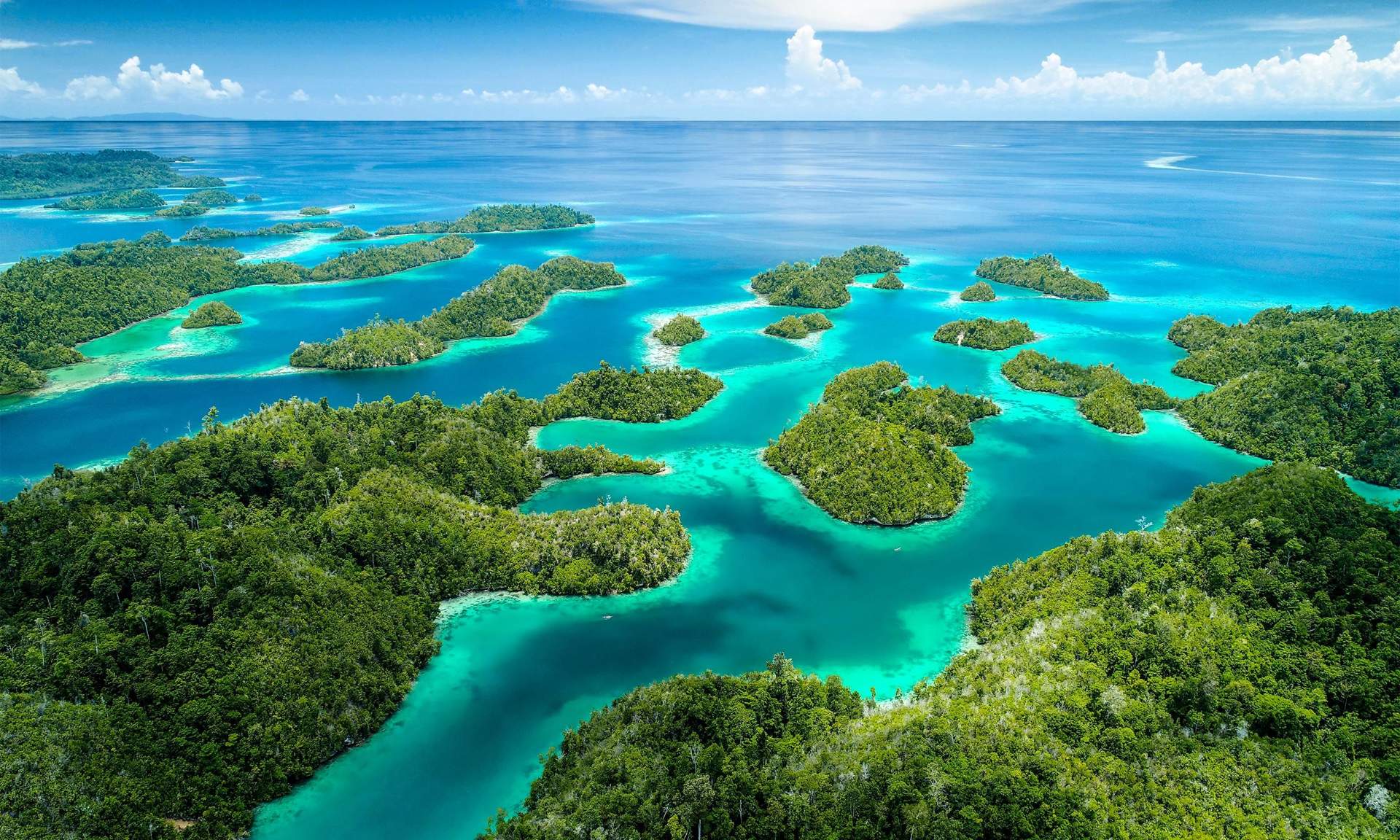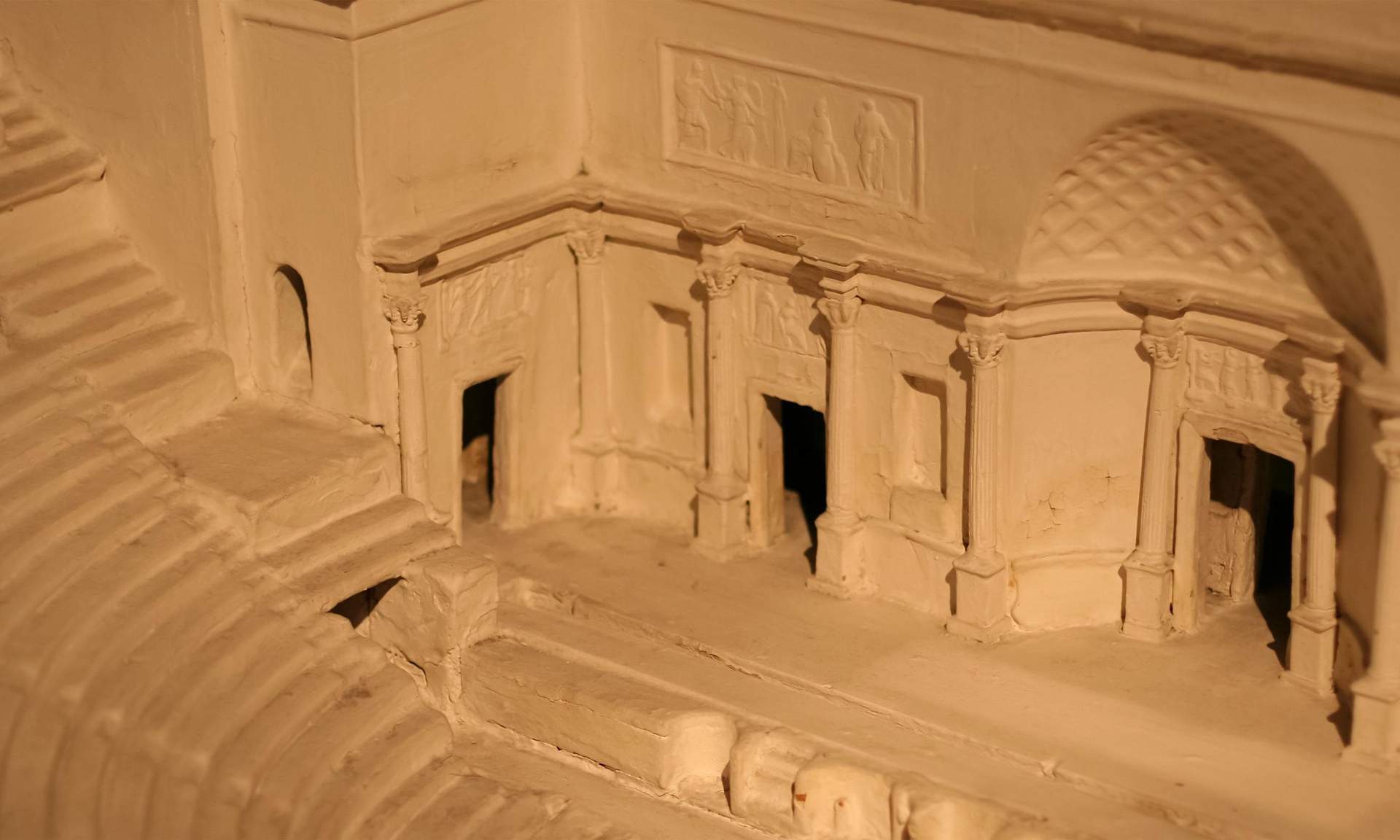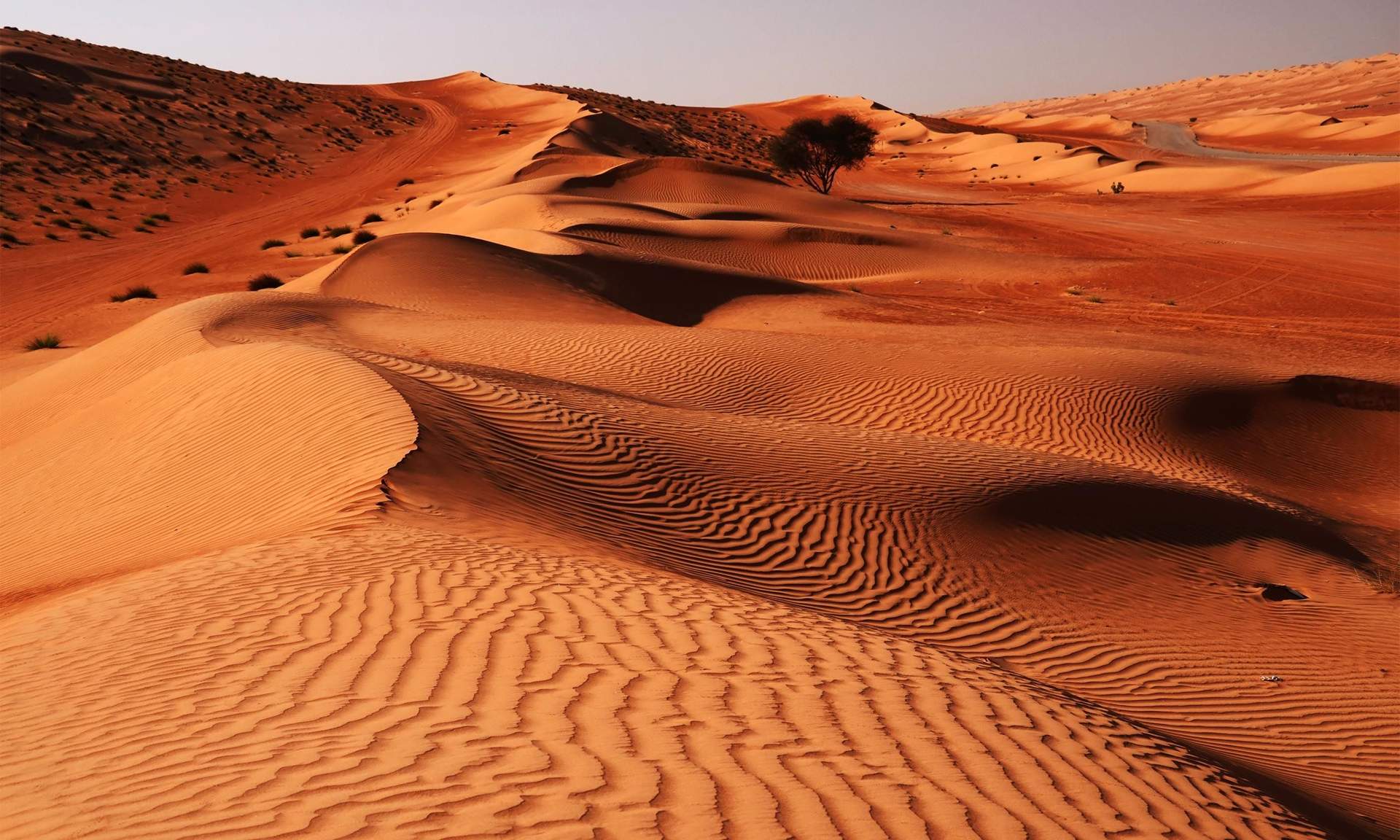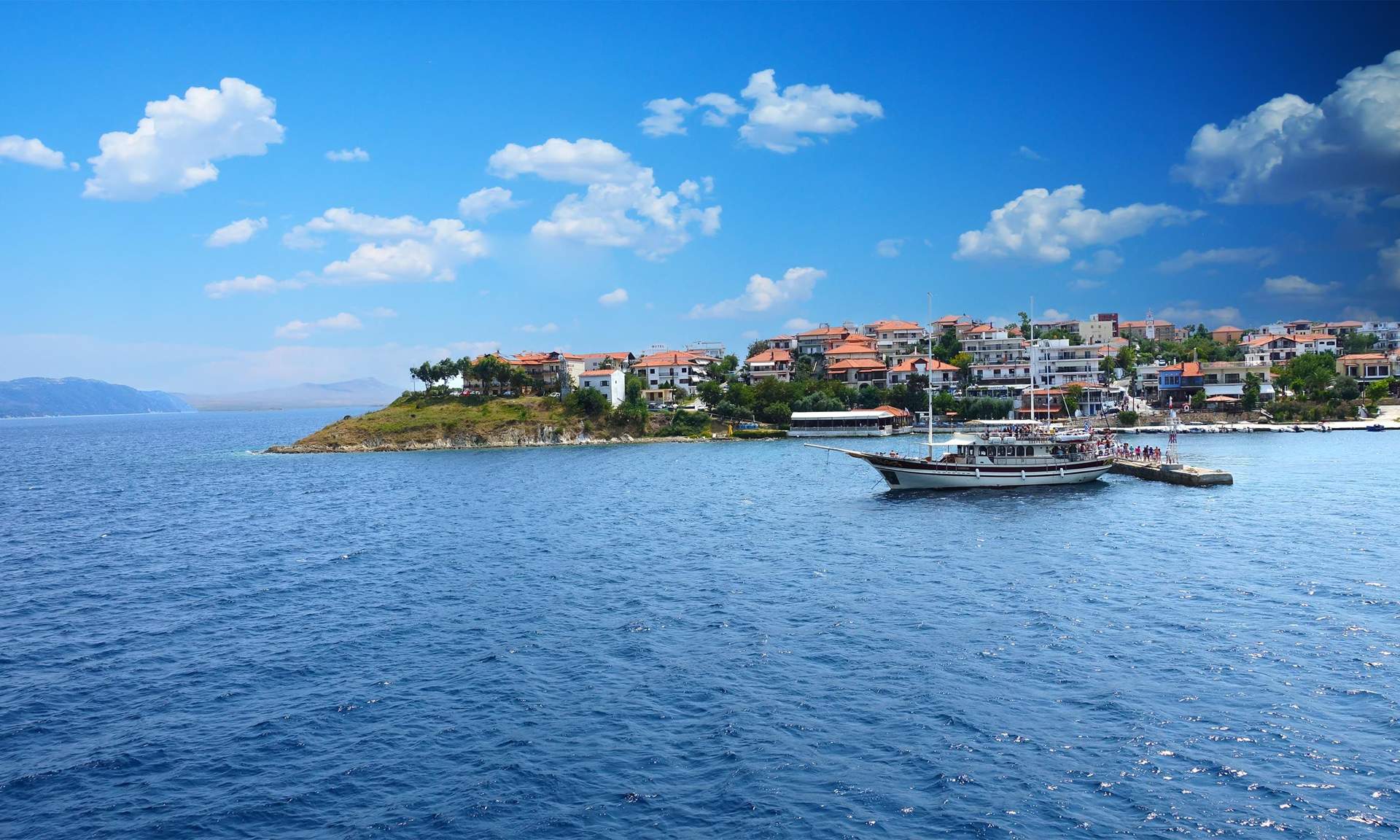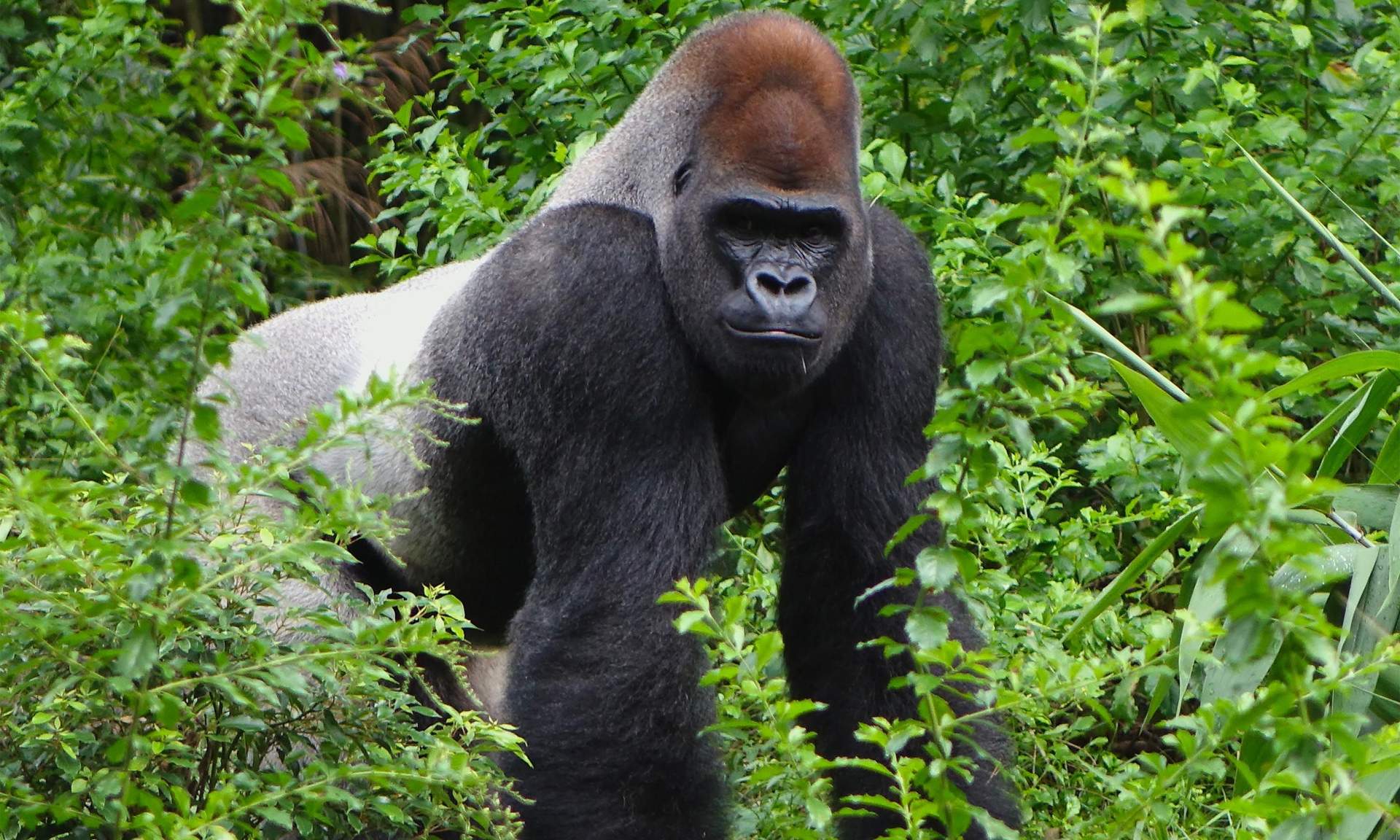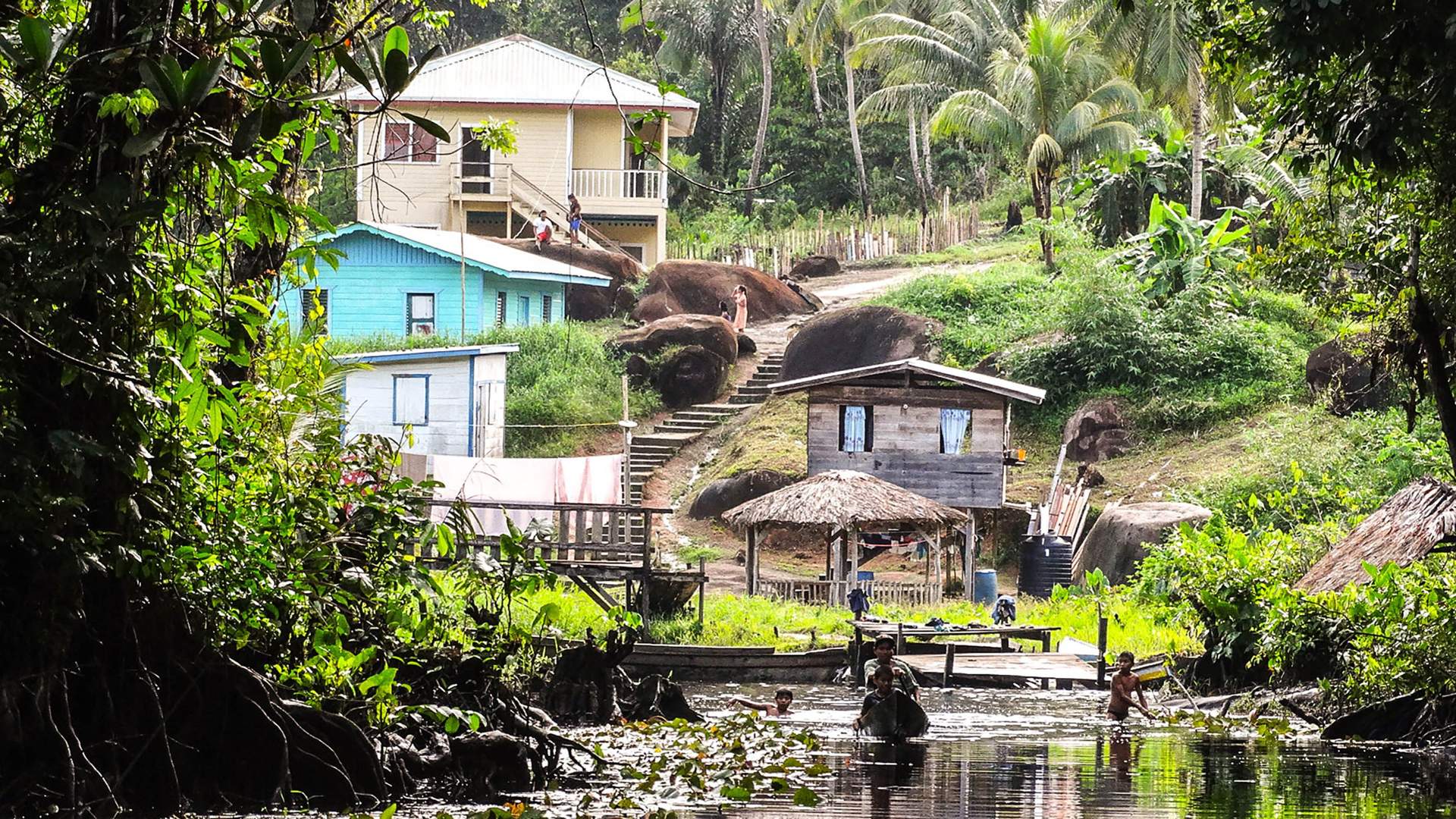1. Admire the Neoclassical in Symi, Greece
Symi, Greece (Shutterstock)
Simon Reeve, author and TV presenter
My travel secret is the little Greek island of Symi, off Rhodes, which has arguably the most spectacular harbour in the country, entirely surrounded by Neoclassical houses.
Think Greece is all package holidays? Greece has the tenth longest coastline of any country on the planet and there are still plenty of areas (and beaches) free of other travellers.
Some of the best events in Greece happen before and after summer. And areas of Greece that you might think you know already during summer are a completely different experience at other times of year. During spring, flowers and greenery are abundant and parts of Greece are as lush as the Tropics, while Greek Easter can be an amazing spectacle.
2. Go wild in Maya Nord in the Republic of Congo
A western lowland gorilla (Shutterstock)
Gavin Thurston, Planet Earth II cameraman
Maya Nord is not a travel destination for the faint-hearted, more for the adventurous and intrepid with a hint of the hidden explorer in them. It is a bai or open clearing in the forests of Odzala-Kokoua National Park, in the Republic of Congo.
With clever planning, you can get from the UK, via Paris and Brazzaville, to deepest Africa within a day or so. The journey itself is an adventure – planes, cars, dug out canoes and some jungle hiking.
The reward is a truly wild paradise inhabited by a host of charismatic mammals, including elephant, western lowland gorilla, chimpanzee, leopard, and forest buffalo, not to mention the bird life. It’s a naturalist’s heaven and one of the truly wild places left on earth.
3. Explore colonial architecture in overlooked Córdoba
Catedral y Cabildo de Córdoba, Argentina (Shutterstock)
Shafik Meghji, writer and co-author of The Rough Guide to Argentina
Popular with Argentines, but often overlooked by foreign travellers, Córdoba province i san incredibly rewarding place to explore.
Its eponymous capital is a youthful, forward-lookingcity, packed with colonial-era architecture, art and cultural spaces, and a dynamic restaurant scene centred on the hip Güemes neighbourhood.
The dramatic Sierras de Córdoba mountain range is wonderful for horseriding, while Mar Chiquita, one of South America’s biggest lakes, is a haven for birdwatchers.
Plus there’s the kitsch Germanic town of Villa General Belgrano, remarkable pre-Columbian petroglyphs, excellent hang-gliding and paragliding, Che Guevara’s childhood home, and a series of Jesuit estancias that date back 400 years.
4. Explore hidden niches at the Hsinbyume Pagoda, Burma
Hsinbyume Pagoda, Myanmar (Shutterstock)
Lyn Hughes, editor-in-chief, Wanderlust
A lot of visitors to Mandalay in Myanmar (Burma) visit the well-known temples.
But the Hsinbyume Pagoda on the western back of the Irrawaddy is a real hidden gem (it’s also called Mya Thein Tan, which translates as 100,000 emeralds).
To get there, either take the daily morning ferry from Mandalay to Mingunjetty, or join a sightseeing river cruise.
The beautiful all-white temple has seven terraces to explore, which represent the mountains that rise up to mythical Mount Meru.
There are even secret statues to spot in hidden niches decorating the waves of the temple.
5. Shop for traditional crafts in Morocco
Selection of spices on a traditional Moroccan market (souk) in Marrakech, Morocco (Shutterstock)
Helen Fanthorpe, senior editor, Rough Guides
Shop with a conscience in Morocco. There are numerous Fairtrade cooperatives and associations in Morocco, which are worth seeking out. Visiting them often means meeting locals, as well as buying beautiful crafts or delicious
food to benefit the community.
A few projects to look out for include the 40 plus cooperatives in the AïtBouguemez, which produce traditional crafts; Al Nour in Marrakesh, a professional training centre for women with disabilities, who create hand-embroidered bed and bath linens; and the Amal Women’s Training Centre, also in Marrakesh, where disadvantaged women gain financial and social security through cooking.
The updated Rough Guide to Morocco is out now.
6. Step back in time at the Kings Weston estate in Bristol
Kings Weston Estate, Bristol (Shutterstock)
Dan Linstead, former editor, Wanderlust
My backyard overlooks the sprawling Blaise and Kings Weston estates in north Bristol. In the 18th century, their woodlands, river-carved gorges and views over the Severn Estuary were internationally famous, visited by European nobility and admired by Jane Austen.
Today, Kings Weston is a true locals’ haunt, a place for ramblers and dog-walkers to step into the dusky woods and back in time. Stand in the Echo, a tumbledown stone folly sprouting vegetation from every nook, and you could almost be in Angkor Wat, Cambodia.
7. Recharge at the Towpath Café in east London
Regents Canal, London (Shutterstock)
Sophie Darlington, wildlife filmmaker
Every spring the Towpath Cafe on Regent’s Canal near Haggerston quietly opens its shutters and you can find the most delicious seasonal food served there until late autumn.
After a shoot it’s where I head to recharge and watch the wildlife and the light refracting on the water.
8. See the flower with the largest bloom in the world in the Cameron Highlands, Malaysia
Rafflesia, Sarawak, Borneo, Malaysia (Shutterstock)
Anthony Bennett, former media specialist, Wanderlust
Atrek through the Cameron Highlands can bring many highlights, one of which is finding the rare Rafflesia, a parasitic plant that has the largest bloom in the world.
The current record is 107cm in diameter and they can weigh up to 10kg. It is rare due to the fact they are collected illegally for use in traditional medicines to treat injuries and infertility.
They also only flower for three to five days, so you have to be in the right place at the right time to catch them in all their glory. As well as the Rafflesia, there are incredible animals in the Highlands; tigers and clouded leopards have even been seen.
9. Go horseback riding in the Paricutín’s lava fields, Mexico
Paricutin, Mexico (Shutterstock)
Dan Stables, author, Rough Guide to Mexico
The hamlet of San Juan Parangaricutiro in Michoacán was almost entirely engulfed by a cataclysmic volcanic eruption in 1943.
Today, all that survives of the original village is the top half of the old church, its tower rising dramatically from the black, cracked lava fields that form the slopes of the young volcano of Paricutín.
Riding to the spectral church on horseback from the nearby village of Angahuan is an unforgettable experience.
The updated Rough Guide to Mexico is out now.
10. Get lost in the secret gardens in Horta, Barcelona
The Maze in Horta Gardens, Barcelona (Shutterstock)
Kirtey Verma, editorial assistant, Wanderlust
Spend a day with the Greek gods at the Labyrinth Park of Horta and you’ll find a place where time stands still. Located on the outskirts of the city, the park doesn’t attract the same amount of attention or crowds as Parc Güell, but it doesn’t seek it – only 750 people are allowed in the park at any given time to preserve its character.
Make your way through the twists and turns of the park’s eponymous maze, where you’ll find a sculpture of love god Eros at the centre. If you can find your way out, climb to the upper terraces – a few people will be taking pictures of the pavilions filled with busts and statues of more Greek gods, but if you continue upwards into the hills, you’ll find fewer people and panoramic views over the city.
Winding pathways lead you past shaded flower gardens, small waterfalls and ponds buzzing with the sound of bright dragonflies into secluded alcoves. Here, you can escape the crowds of Las Ramblas and while away the day in peace. Plus, it’s free on a Sunday.
11. Enter another realm at the Lençóis Maranhenses National Park in Brazil
The lagoons at Lencois Maranhenses, Maranhão, Brazil (Shutterstock)
Rachel Lawrence, managing editor, Insight Guide: Brazil
Visitors who make it to this remote corner of north-eastern Brazil are rewarded by an otherworldly environment of rolling sand dunes and crystalline lakes.
The journey from São Luís to Barreirinhas takes about three hours. From here, tours into the park by boat and 4×4 can be arranged. The lagoons are best visited while at their fullest, between July and September.
The updated Insight Guide: Brazil is out now.
12. Dive the Amazon
Pygocentrus nattereri. Flock of ferocious Amazonian piranhas (Shutterstock)
Jeremy Wade, TV presenter
There’s a place on one of the Amazon’s southern sub-tributaries where you can push through the vegetation into a tiny channel, which leads to a pool of the clearest water, and a truly surreal underwater landscape.
Dive down; every boulder-pile holds an electric eel, but in the clear water visitors can avoid the consequences of blundering into one of these guardians.
13. Unravel secrets at the My Son temples in Vietnam
My Son, Vietnam (Shutterstock)
Nora Wallaya, digital executive, Wanderlust
My Son sanctuary is a collection of temples dating from the 4th to the 13th century in Vietnam.
This impressive site was left behind by the mysterious Champa civilisation, whose secrets have still not all been unravelled.
Situated around an hour’s drive west of Hoi An, its rural location means it gets fewer visitors.
When you’re there, check out the local graveyard on a steep hill nearby – where hundreds of brightly-coloured headstones resemble an assortment of little dolls’ houses.
14. See hidden falls in Switzerland
Trummelbach waterfall, Switzerland, the biggest waterfall in Europe (Shutterstock)
Mike Wright, art editor, Wanderlust
There are a total of 72 waterfalls to see in the Lauterbrunnen Valley in Switzerland but don’t miss those not on view: the hidden Trummelbach Falls.
Accessed via an ancient tunnel funicular and lift, ten glacial waterfalls thunder down inside the mountain spraying you with a fine soaking mist. The roaring force of the water plunges down multiple tiers all easily seen from small viewing platforms.
15. Get in pole position in Poznan, Poland
Poznan, Poland (Shutterstock)
Ben Aitken, travel writer
I moved to Poland to find out why the Poles were leaving. The answer was money. I could have Googled it. But a Google search wouldn’t have taught me that Poland is beautiful, complicated and utterly memorable, and that working in a fish and chip shop on minimum wage is only fun up to a point.
I lived in Poznan. Its secret? I’d say its corners, its outskirts. I spent days riding the trams, acquiring a bigger picture. Centres are fine, but edges are rich. Sometimes it’s good to look the wrong way.
Ben’s A Chip Shop in Poznan: My Unlikely Year in Poland (Icon Books, 2019) is out now.
16. Lose the crowds at Holkham Beach in North Norfolk
Tidal salt marsh creek on the North Norfolk coast at Holkham (Shutterstock)
Catriona Bolger, former publishing director, Wanderlust
Yes, Holkham Beach is award-winning, yes the estate owned parking can be limited, but it’s so easy to lose any crowds by taking a walk through the pine forest or along the amazing wide open beach.
Even in peak, school holiday, summer you can easily find yourselves alone where the sand meets the sky. Go bird watching, spot a seal or two if you are lucky and then enjoy a pint in The Victoria at the end of the day.
17. Uncover the Hôtel-Dieu, France
Main Courtyard of the Hotel Dieu (Shutterstock)
Just seconds away from Notre-Dame Cathedral is a blue door. You could easily miss it, but what lies beyond is one of Paris’s best-kept secrets: the Hôtel-Dieu complex, the city’s oldest working hospital.
Slip through the sliding doors, ask for directions to the courtyard, and you’ll find a piano and Hausmanian architecture – the ideal cure to the city’s crowds. But remember to be quiet – the patients don’t want the word getting out.
18. Avoid long queues in Rome
The Roman Forum (Shutterstock)
Nick Boulos, founder of MakeMyDay
Avoid the long queues that snake around the Colosseum and instead go across the road to buy your entrance tickets at the fascinating Roman Forum. It’s usually more quiet and your ticket also includes fast track admission to the Colosseum. Result!
19. Ignore stereotypes and visit Essex
Epping Forest (Shutterstock)
Tom Hawker, managing editor, Wanderlust
Ignored by guidebooks but adored by the likes of Robert Macfarlane, Essex is England’s most under-appreciated travel spot.
Whether for the ancient woodlands of Epping and Hainault or the bird-heavy coastlines and marshy wildernesses – like Rainham Marches and Two Tree Island – that stretch up the Thames. Time to chuck those stereotypes into the Estuary.
20. Kayak in uncharted rivers, Suriname
Suriname River, Upper Suriname (Shutterstock)
Aldo Kane, world record-setting adventurer
My recent trip to Suriname left me speechless. It’s one of the last bastions of true adventure and exploration on the planet with well over 94% of its surface area still covered in primary forest. It’s relatively easy to get to and is a shining example of how to manage resources and the environment properly.
Taking an internal flight out to Kabalebo Nature Resort can have you kayaking in uncharted rivers, wildlife spotting and going on guided ranger trips into the country’s interior. Once you’ve had your fix of adventure you can head back to the capital, Paramaribo and relax in one of the many excellent hotels.
21. Find adventure in one of Morocco’s ancient sites
Lixus, Morocco (Dreamstime)
Aimee White, editor, Make The Most of Your Time on Earth
’Travel far enough and you’ll meet yourself’ – or so the saying goes. But travel far enough and you’ll also bump into the Romans, who at the height of their Empire touched Lixus in Morocco. Off the beaten track and with few modern-day markings, Lixus is one of the oldest inhabited sites in Morocco.
In the city where Hercules completed one of his 12 labours, catch a glimpse of Roman life with its deserted temple sanctuaries, intricate mosaics and the Upper Town’s crumbling amphitheatre, away from the souks and unforgiving deserts.
Make the Most of Your Time on Earth (Rough Guides) is out now
22. Dive unexplored sunken caves in the Yucatan, Mexico
Cave Cenote, Yucatan, Mexico (Shutterstock)
My secret location is the Cenotes, the sunken caves of Yucatan, Mexico. I guess the exciting thing for me about the Yucatan is it’s somewhere where there are millions of tourists. It’s a very well-known area.
You have beaches that are thronged with people and you can go a mile away from those crowds and be underground, underwater in a place that no other human being has ever been before. That as an idea it blows my mind. And I think it’s one of the most exciting things that I’ve seen and learnt this year.
23. Go cycling in Tupiza, Bolivia
Duende Canyon, Bolivia (Shutterstock)
Tupiza in Bolivia is surrounded by fabulous rock formations and dry river beds. It’s a great place for trekking, cycling and riding.
The route north to the Salar de Uyuni salt flat takes in old mining towns (with Butch and Sundance connections) and miles of roads above 4,000m past lakes of blue, black, green and red waters, lonely volcanoes, surreal rocks and hot springs that you daren’t come out of because the cold air outside.
24. Stop off for a pick-me-up at Cape Wrath, Scotland
The Cape Wrath Trail, Scotland (Shutterstock)
Sean Conway, endurance adventurer, author and motivational speaker
Have you ever been on a long walk and arrive at the café 10 minutes after it closes? It’s heart-breaking when that piece of cake and cup of soup you’ve been dreaming of for hours is locked behind a glass door.
Well, if you happen to be walking toward Cape Wrath lighthouse on Scotland’s northern- most reaches then you will never have this problem. There is a café in the lighthouse that will open for you whatever time of day or night. I know this because I have tested it when I arrived at 10:30pm to a warm bowl of soup.
25. Go skiing in Tehran, Iran
Alborz Mountains, Dizin, Tehran, Iran (Shutterstock)
Andy Smart, comedian and travel writer
If you have some time off in Tehran why not go skiing for the day. The city is surrounded by the desert to the south and a crescent of mountains to the north.
There is a ski resort at Tochal, on the highest peak of these mountains. It takes about an hour from the city centre to the bottom of the lifts. The runs are basic but not busy. Just two hours north is the bigger resort of Dizin, with chalets and ski hire shops.
Andy’s book A Hitch in Time (AA Publishing, 2019) is out now.
26. Adventure down the Amazon on a public riverboat
The riverboat to Manaus (Shutterstock)
Adventure cruises by boat are an exciting way to explore the world’s great rivers. Yet such expeditions can be prohibitively expensive. So consider using long distance public ferries for a fraction of the cost. I recently made a legendary trip down the Amazon from its mouth at Belem to Manaus on a public riverboat.
The 6-day journey cost just R$200 (£40) for a cabin. Besides soaking in the Amazonian scenery I wiled the days away getting to know the mostly Brazilian passengers.
27. Take a tour of Rurrenabaque Pampas, Bolivia
Rurrenabaque, Bolivia (Shutterstock)
100km north-east of Rurrenabaque, in the Bolivian lowlands, is Santa Rosa, the remote jumping off point for boat tours on the slow-moving Río Yacuma, where wildlife is bountiful. Families of capybara, hundreds of caiman, pink river dolphin, raucous hoatzin, herons and innumerable other birds can be seen at boat level.
Look up into the gallery forest for howler, squirrel and capuchin monkeys. On a walk through the marshes, wading in parts, you’ll see spoonbills and maybe even an anaconda if you’re lucky.
Find out more of the world’s secrets:










